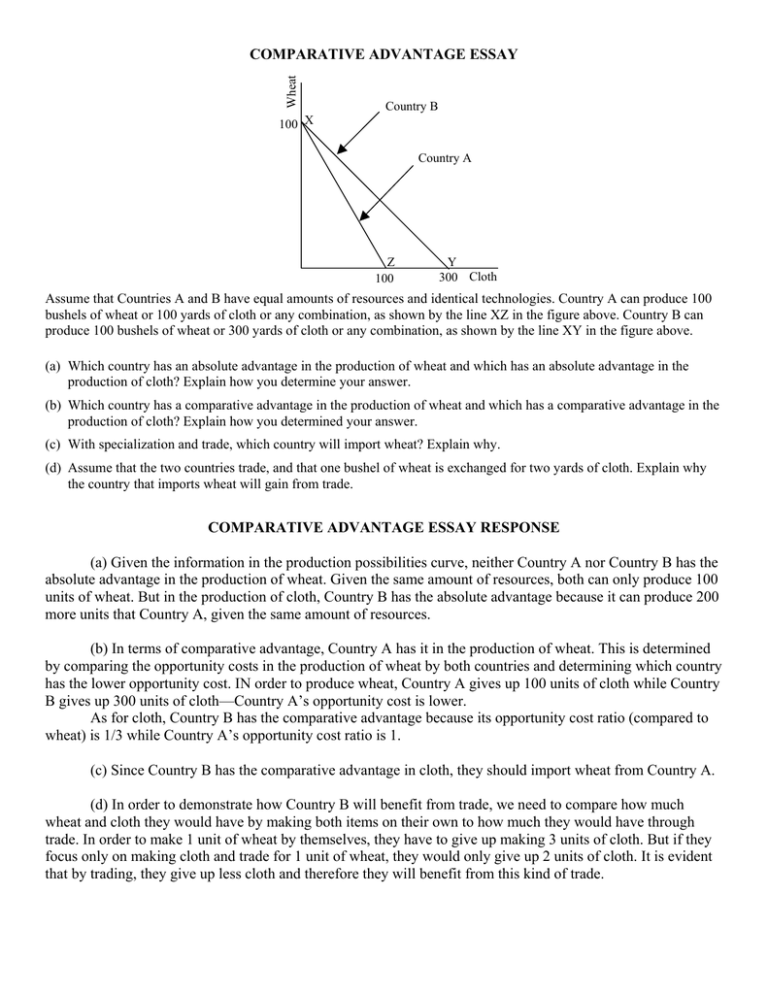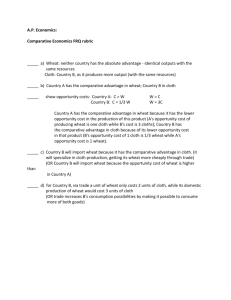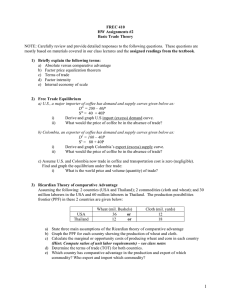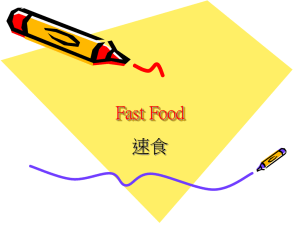Assume that Countries A and B have equal amounts of resources
advertisement

Wheat COMPARATIVE ADVANTAGE ESSAY 100 X Country B Country A Z 100 Y 300 Cloth Assume that Countries A and B have equal amounts of resources and identical technologies. Country A can produce 100 bushels of wheat or 100 yards of cloth or any combination, as shown by the line XZ in the figure above. Country B can produce 100 bushels of wheat or 300 yards of cloth or any combination, as shown by the line XY in the figure above. (a) Which country has an absolute advantage in the production of wheat and which has an absolute advantage in the production of cloth? Explain how you determine your answer. (b) Which country has a comparative advantage in the production of wheat and which has a comparative advantage in the production of cloth? Explain how you determined your answer. (c) With specialization and trade, which country will import wheat? Explain why. (d) Assume that the two countries trade, and that one bushel of wheat is exchanged for two yards of cloth. Explain why the country that imports wheat will gain from trade. COMPARATIVE ADVANTAGE ESSAY RESPONSE (a) Given the information in the production possibilities curve, neither Country A nor Country B has the absolute advantage in the production of wheat. Given the same amount of resources, both can only produce 100 units of wheat. But in the production of cloth, Country B has the absolute advantage because it can produce 200 more units that Country A, given the same amount of resources. (b) In terms of comparative advantage, Country A has it in the production of wheat. This is determined by comparing the opportunity costs in the production of wheat by both countries and determining which country has the lower opportunity cost. IN order to produce wheat, Country A gives up 100 units of cloth while Country B gives up 300 units of cloth—Country A’s opportunity cost is lower. As for cloth, Country B has the comparative advantage because its opportunity cost ratio (compared to wheat) is 1/3 while Country A’s opportunity cost ratio is 1. (c) Since Country B has the comparative advantage in cloth, they should import wheat from Country A. (d) In order to demonstrate how Country B will benefit from trade, we need to compare how much wheat and cloth they would have by making both items on their own to how much they would have through trade. In order to make 1 unit of wheat by themselves, they have to give up making 3 units of cloth. But if they focus only on making cloth and trade for 1 unit of wheat, they would only give up 2 units of cloth. It is evident that by trading, they give up less cloth and therefore they will benefit from this kind of trade.




